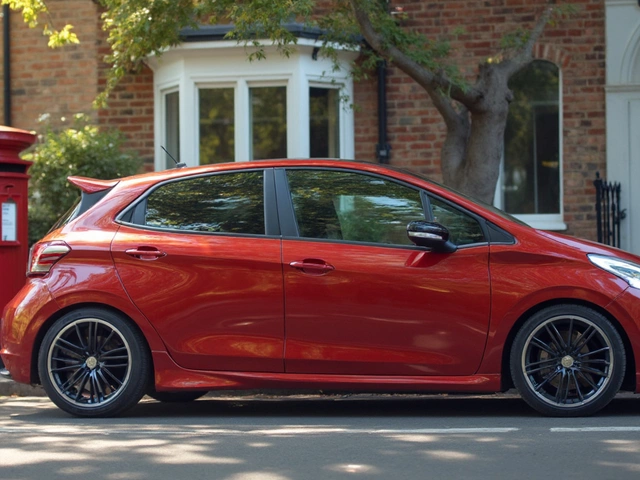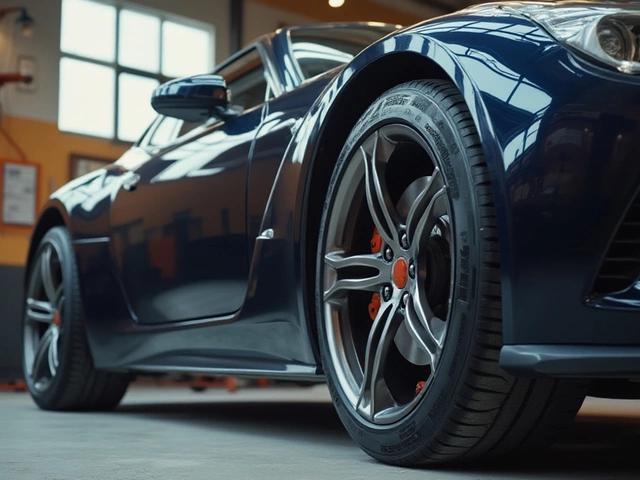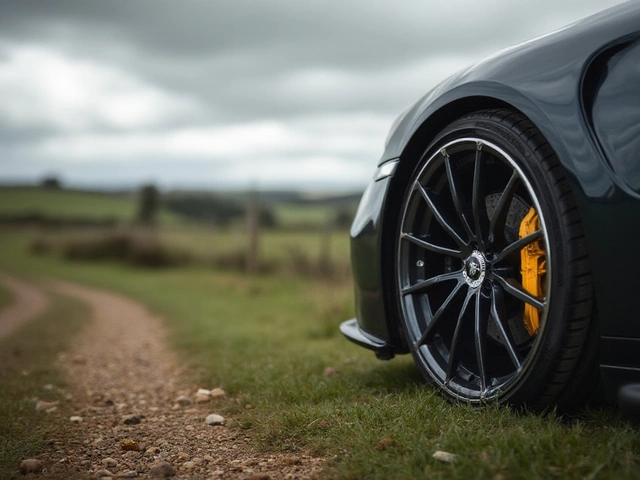Wheel Spacer Compatibility Calculator
Compatibility Results
Wheel spacers might look like simple metal rings, but they can change how your car handles, looks, and even how safe it is on the road. If you’ve ever stared at your car and thought, ‘It looks a little too tucked in’, you’re probably considering spacers. They’re popular in the tuning scene for that wide, planted stance. But before you buy a set, you need to know what they really do - and what they might break.
What Wheel Spacers Actually Do
Wheel spacers are thin discs, usually made of aluminum or steel, that fit between your wheel and your hub. They push the wheel outward, increasing the track width. That’s it. No magic. No performance boost. Just distance.
Think of it like putting a thick book under your foot when you’re standing on a scale. You’re not stronger - you’re just spread out differently. Same with spacers. They don’t make your suspension better. They don’t improve grip. They just change where the wheel sits relative to the fender and suspension components.
Most spacers come in thicknesses from 5mm to 25mm. Some are hub-centric - meaning they fit snugly over the hub to keep the wheel centered. Others are just bolt-on rings that rely on the lug nuts to hold everything in place. The difference matters a lot.
Pros of Wheel Spacers
- Wider stance = better looks - This is the #1 reason people install them. A car with wheels pushed out to the fender line looks aggressive, stable, and intentional. It’s the difference between a stock Civic and one that looks like it belongs on a drift track.
- Clearance for big brakes - If you’ve upgraded to performance brakes with larger calipers, stock wheels might not fit. Spacers can give you the extra millimeters needed to avoid rubbing. Many track-focused owners use 10-15mm spacers to fit 6-piston calipers without changing wheels.
- Improved cornering stability - Wider track means less body roll. On a track day or during hard cornering, that extra width helps the tires maintain better contact with the road. It’s not a huge gain, but it’s measurable - especially in cars with narrow stock track widths like older European sedans.
- Cost-effective alternative to new wheels - A set of 15mm spacers costs less than $150. New wheels with the right offset can run $800-$2,000. For many, spacers are a budget-friendly way to test a look before committing.
- Easy to install and remove - You don’t need a lift. Just jack up the car, remove the wheel, slide the spacer on, bolt it back. No alignment needed unless you go over 15mm.
Cons of Wheel Spacers
- Increased stress on wheel bearings - Every millimeter you push the wheel out adds leverage. That extra distance puts more sideways force on the hub and bearings. Over time, this can lead to premature wear. A study by the Australian Automotive Research Centre found that spacers over 15mm increased bearing load by up to 40% in vehicles with stock suspension setups.
- More strain on suspension components - Control arms, ball joints, and tie rods now have to work harder to keep the wheel aligned. If your car already has worn parts, spacers will make things worse faster. You might start hearing clunks or feel the steering getting vague.
- Risk of improper fitment - Cheap spacers that aren’t hub-centric can wobble. The wheel isn’t centered on the hub - it’s centered on the lug nuts. That causes vibrations, uneven tire wear, and even wheel separation in extreme cases. Always choose hub-centric spacers with precise bore sizes that match your hub.
- Legal issues in some places - In Australia, modifications that extend the wheel beyond the fender line are illegal unless you have engineering certification. In some European countries, spacers are outright banned. Police can ticket you, or worse - fail your vehicle inspection.
- Can cause tire rubbing - Pushing the wheel out might seem harmless, but it can make the tire rub against the fender liner, suspension, or brake lines during turns or when the suspension compresses. You might not notice it at first, but over time, it wears through rubber and metal.
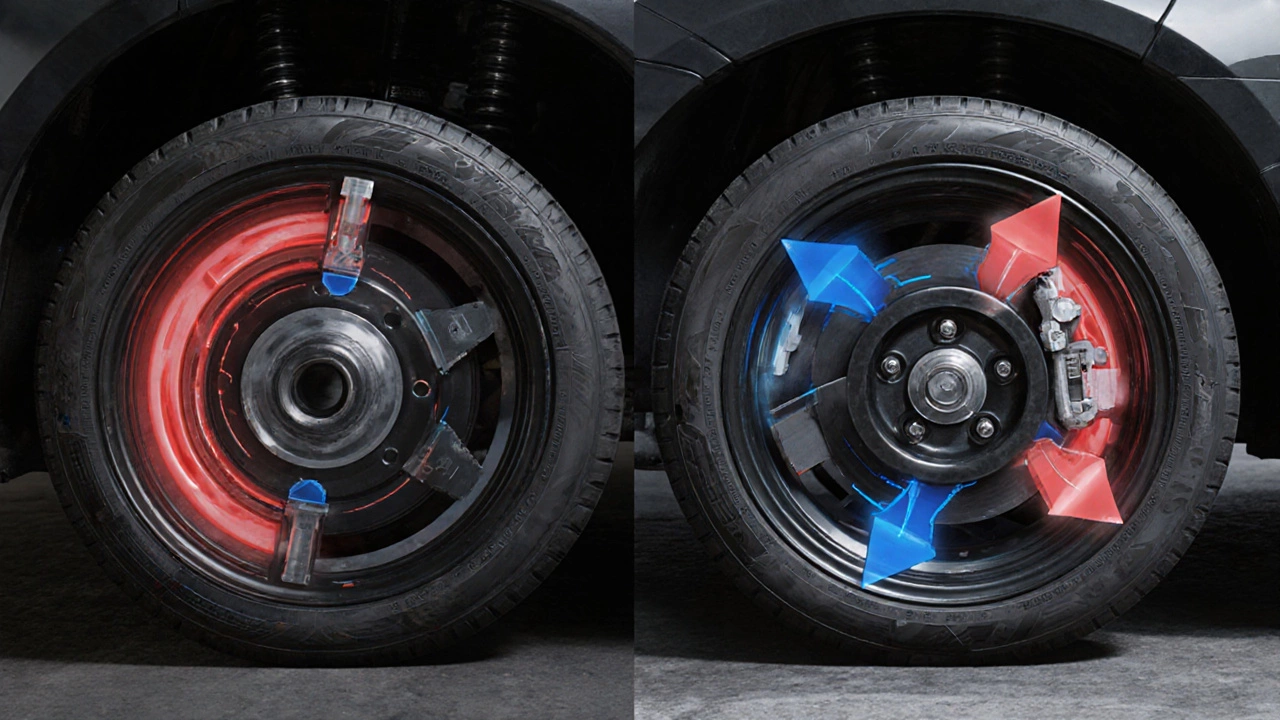
When Spacers Work - And When They Don’t
Spacers aren’t a one-size-fits-all fix. They work best in specific situations.
Good candidates:
- Older cars with narrow track widths (e.g., E46 BMW, Mk4 Golf, AE86)
- Track cars with big brake kits and stock wheels
- Low-budget builds where you’re testing a look before buying new wheels
- Off-road vehicles needing clearance for wider tires on stock rims
Bad candidates:
- Modern cars with tight suspension geometry (e.g., Toyota Corolla, Hyundai Kona)
- Performance cars with already aggressive wheel offsets (e.g., Subaru WRX STI, Nissan GT-R)
- Any car with worn suspension parts - spacers will accelerate failure
- Heavy vehicles like SUVs or trucks used for towing - extra leverage = dangerous stress
If your car has a factory offset of +45 or higher, adding spacers might push the wheel too far out. If it’s +20 or lower, you’re already running wide - spacers might not help at all.
How to Install Spacers Right
Bad installation is why most people have problems. Here’s how to do it properly:
- Use hub-centric spacers only. The bore must match your hub diameter exactly.
- Use longer lug bolts. The spacer takes up space, so your original bolts won’t reach. You need bolts that are 5-10mm longer than stock, depending on spacer thickness.
- Torque bolts to spec - don’t guess. Over-tightening can warp the spacer or strip threads. Under-tightening can let the wheel spin loose.
- Check for clearance - turn the wheel lock to lock. Look for tire contact with fender, brake lines, or suspension arms.
- Get an alignment after installation. Even 10mm can affect camber and toe.
Never use spacers with stud adapters (those cheap bolt-on rings that screw into the hub). They’re not engineered for stress. They’re a death wish.
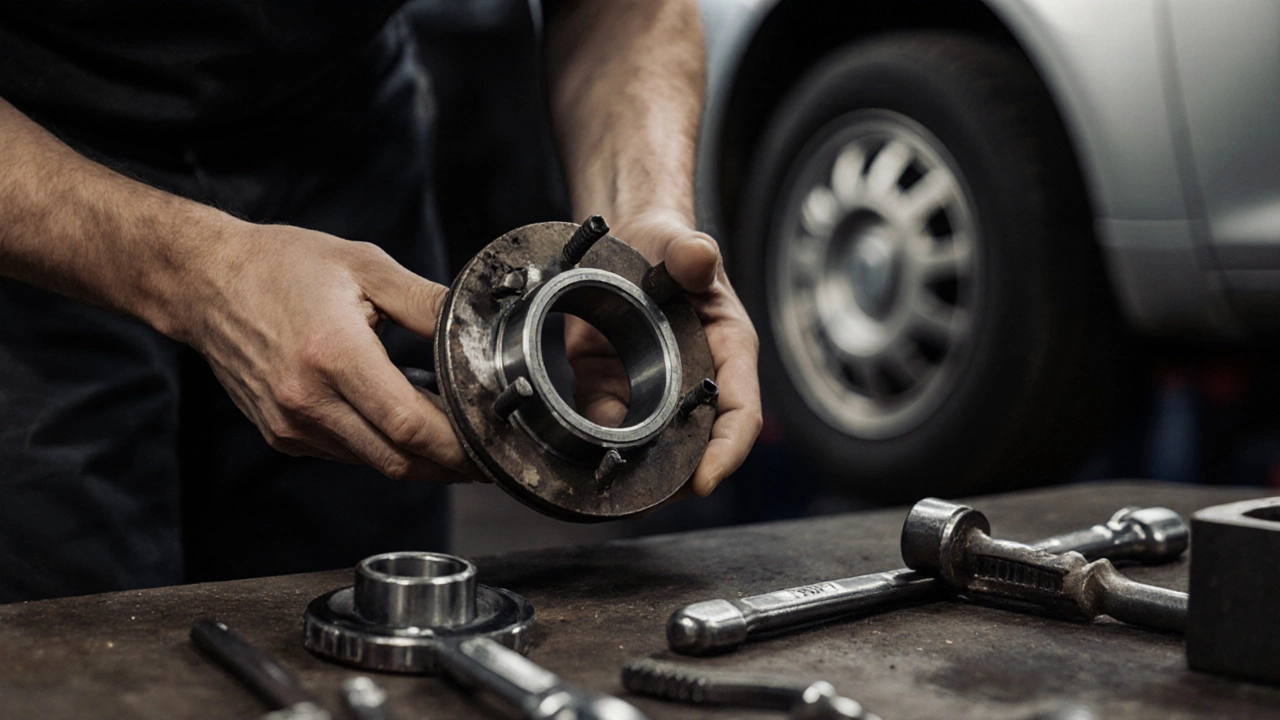
What About Wheel Bearings? Are They Really at Risk?
Yes. And it’s not just theory.
Wheel bearings are designed to handle vertical loads and some lateral forces - but not extra leverage. Every millimeter you add increases the moment arm. That’s physics. More leverage = more force on the bearing.
Real-world example: A 2018 Honda Civic with 15mm spacers showed 37% more bearing wear after 25,000km compared to stock. The owner didn’t notice until the wheel started making a grinding noise. Replacing the bearing cost $600. The spacers cost $90.
It’s not that spacers always kill bearings. It’s that they shorten their life. If you’re planning to keep the car for 5+ years, think twice. If it’s a weekend toy, maybe it’s worth the risk.
Alternatives to Spacers
If you want a wider stance without the downsides, here are better options:
- Wheels with the right offset - Buy wheels with a lower offset (like +30 instead of +45). This moves the wheel out without adding stress. It’s the cleanest solution.
- Aftermarket control arms - Adjustable arms let you fine-tune alignment and track width without spacers. Great for track cars.
- Rolling fenders - If you’re just trying to fit wider tires, rolling or pulling fenders gives you clearance without changing the wheel position.
These cost more upfront, but they’re built into the car’s design. No extra stress. No hidden failures.
Final Verdict: Are Wheel Spacers Worth It?
They’re not inherently bad. But they’re not harmless either.
If you’re running 5-10mm hub-centric spacers on a car with good suspension and you’re not driving it hard or daily, they’re probably fine. You’ll get the look you want without major risk.
If you’re pushing 15mm or more, on a daily driver with worn parts, or planning to take it to the track - skip them. The cost of repairs will eat your savings.
And if you’re in Australia? Make sure your setup complies with local road rules. You don’t want to get pulled over because your wheels stick out past the fenders.
Spacers are a tool. Not a magic fix. Use them wisely - or don’t use them at all.
Are wheel spacers legal in Australia?
In Australia, wheel spacers are legal only if the wheel doesn’t extend beyond the fender line and the vehicle passes engineering certification. Most states require certification if you modify the track width by more than 25mm. Police can issue fines or fail your vehicle inspection if wheels stick out past the body. Always check with your local road authority before installing spacers.
Do wheel spacers affect fuel economy?
Not directly. But if spacers cause increased tire scrub, higher rolling resistance, or added aerodynamic drag from wider wheels, you might see a small drop - around 1-3% in city driving. It’s negligible for most drivers, but noticeable over long distances or in fuel-efficient cars.
Can I stack two spacers for more width?
Never stack spacers. Each spacer adds another interface point where things can loosen or flex. Two spacers mean two potential failure points. The combined stress on the hub, bolts, and bearings becomes unpredictable and dangerous. If you need more than 20mm, get wheels with the right offset instead.
Do spacers cause vibrations?
Yes - if they’re not hub-centric or if the bolts aren’t torqued properly. Non-hub-centric spacers let the wheel wobble slightly, which causes shaking at speed. Even a 0.5mm misalignment can create vibrations at 80km/h. Always use hub-centric spacers and torque bolts to the manufacturer’s spec.
How thick of a spacer can I safely use?
For daily drivers, stick to 5-10mm. For track cars with upgraded suspension and bearings, 10-15mm is acceptable if everything is in good condition. Anything over 15mm increases risk significantly and should only be used on purpose-built vehicles with reinforced components. Always check manufacturer guidelines - some cars have zero tolerance for spacers.


